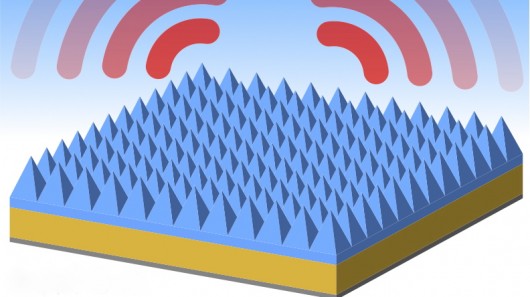
Photovoltaic cells are one of the more promising alternative energy sources. Mechanically they are very simple, with no moving parts, and are clean and emission-free. Unfortunately they are also inefficient. One of the reasons for this is that they overheat, a problem that a Stanford University team under electrical engineering professor Shanhui Fan is addressing with the development of a thin glass layer that makes solar cells self-cooling.
 Photovoltaic cells are one of the more promising alternative energy sources. Mechanically they are very simple, with no moving parts, and are clean and emission-free. Unfortunately they are also inefficient. One of the reasons for this is that they overheat, a problem that a Stanford University team under electrical engineering professor Shanhui Fan is addressing with the development of a thin glass layer that makes solar cells self-cooling.
Photovoltaic cells are one of the more promising alternative energy sources. Mechanically they are very simple, with no moving parts, and are clean and emission-free. Unfortunately they are also inefficient. One of the reasons for this is that they overheat, a problem that a Stanford University team under electrical engineering professor Shanhui Fan is addressing with the development of a thin glass layer that makes solar cells self-cooling.
Despite many advances in recent decades, solar cells suffer from efficiency problems. Only a small amount of the energy from sunlight that falls on solar cells is converted to electricity, peaking at below 20 percent for most cells on the market today. Overheating is a constant problem because the sunlight used to generate electricity routinely heats up the panels to 130⁰ F (55⁰ C) or higher.
This heating causes all sorts of problems – not the least of which is a dramatic drop in efficiency. According to the Stanford team, each degree Celsius (1.8⁰ F) heating results in an efficiency drop of 0.5 percent. Equally unpleasant, with each increase in temperature of 10⁰ C (18⁰ F) the deterioration rate of the cells doubles.
Cooling is an obvious step, but the question is, how to do it? Active systems, such as coolant pumps or ventilation, consume power, and passive systems aren't very effective and can interfere with the the panel’s operation. The solution developed by Shanhui Fan, who has previously applied similar principles to passive cooling for buildings, is a system where ordinary solar cells are given an extremely thin layer of specially patterned silica glass that is designed to draw heat away from the cells in a manner that requires no energy and exploits the atmosphere’s infrared window to shed the heat.
The pattern consists of micro-pyramids and cones measuring only microns in thickness, which are sized and shaped to draw away heat in the form of infrared radiation to the top of the layer, where it radiates and disperses into the atmosphere. It’s based on the fact that different wavelengths of light have different properties and refract differently. The Stanford team tailored the silica glass layer to allow visible light in and heat in the form of infrared light out.
“Silica is transparent to visible light, but it is also possible to fine-tune how it bends and refracts light of very specific wavelengths,” says Fan. “A carefully designed layer of silica would not degrade the performance of the solar cell but it would enhance radiation at the predetermined thermal wavelengths to send the solar cell’s heat away more effectively.”
The Stanford team is testing and fine tuning the cooling layer with the aim of lowering the solar panel’s operating temperature in order to make the more efficient and with a longer operating life.

 Previous page
Previous page Back to top
Back to top







